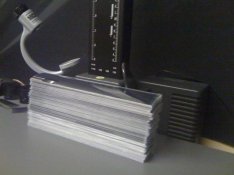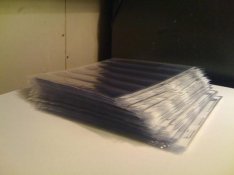RE: levels adjustment... careful! You can easily convince yourself, incorrectly, that your negs are optimal when they are not. I can tell you that I have almost unprintable negs that still scan decently. For example, I have a set of negs that were overexposed by ~8+ stops... they are literally
black to the eye. Black. I overexposed them that severely because I simply forgot to put an IR filter in place, duh

Anyway the negs are black and yet... off the scanner they don't look half bad, just grainy. I also have thin negs that scan fairly decently. As for tone curve, that is something scan software can manipulate like buts, so don't fall into the trap of using that as a crutch.
N.b. b&w neg materials do not reach anywhere near the kind of DMax that challenges today's scanners; many film scanners were designed to deal with severe DMax ~4 from slide films like velvia, that is what people mostly wanted to scan when ciba/ilfochromes became so expensive. So... even a crappy b&w neg can be scanned quite decently. They may look grainy and the tonality may suck but you'd be absolutely amazed how much info is in the crappiest b&w negs. Ask me how I know this

I was scanning negs for a year or so before I was optically printing them. It wasn't until I started printing that the whole loop closed and I realized the need to think optimize the whole process.
So... to make a long story short, I agree that auto levels adjustments on your scanned negs will indeed make them look better, but not necessarily for the right reason.
This is where meeting an experienced photographer is handy... he/she will be able to glance at the negs and say yea or nay very quickly. If he/she cannot judge by eye (it takes a good deal of experience) then he/she will probably do a quick contact print and issue a verdict immediately, or use a densitometer. Some people do it scientifically, with a step wedge etc. You might look at "beyond the zone system" (BTZS) to see what some people do. I don't do that, but I do believe it is important to get as close to optimal negs right at the outset, it'll save you a
ton of work later on. Hear me now believe me later

Anyway, again, just know that getting a scannable/printable neg is not the same thing as getting an *optimal* neg. Don't be afraid of that or take it as a negative comment, it's really just a little bit further you need to go before you have everything nailed down. Do take time to be happy with what you've accomplished so far, it is going to pay off very soon. Congrats on your results this far. APUG is collectively proud of you!










